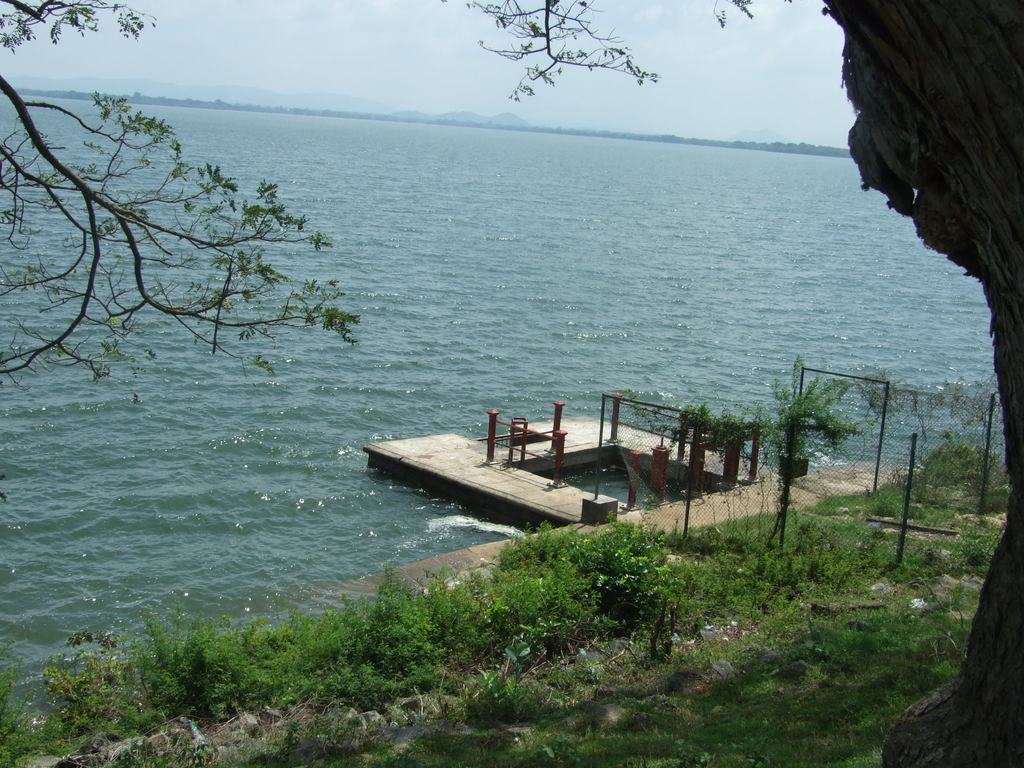 |
Home About Directory Conservation |
 |
Kantale Tank Location: 80 27’ 0 N and 800 55’ 0 E to 80 15’ 0 N and 810 50’ 0 E; 934048 N and 490827 E to 912032 N and 591779 E; about 35km southwest of Trincomalee in the Trincomalee District, of the Eastern Province. Area: 3,750 ha at full supply level Altitude: Information not available Overview: This is a large, ancient irrigation tank built by King Aggabodhi II who reigned from 604-614 AD. The catchment area of the tank is about 20,000 ha. The tank receives irrigation water diverted from the Mahaweli River. Kantale tank is an important storage tank and supports a thriving inland fishery. The bund was breached in 1986 and recently reconstructed. This tank has been identified as an IBA by BirdLife International. Physical features: Kantale tank primarily acts as a storage tank and has a maximum depth of 9.8m. The salinity in the Kantale tank is said to be relatively low, perhaps due to the dilution resulting from diversion of Mahaweli water via Bowatenna. As such the pH is approximately 7.2. The Kantale Tank is situated in the dry zone. The area receives a mean annual rainfall of 1,500 – 2,000 mm. The mean annual temperature is about 280C. Ecological features: The surrounding landscape is characterised by natural vegetation types such as dry mixed evergreen forests and sparsely distributed scrublands and anthropogenic habitats such as paddy fields, chena and home gardens. Noteworthy fauna: The freshwater fish are dominated by exotic species such as Oreochromis mossambicus. The indigenous fish fauna comprises of Puntius spp, Channa spp. Water birds include Leptoptilos javanicus, Pelecanus philippensis, Anhinga melanogaster, Phalacrocorax niger and Haliaeetus leucogaster. Large herds of Elephas maximus visit the tank regularly from the surrounding areas. Noteworthy flora: Chloroxylon swietenia, Drypetes sepiaria and Vitex altissima are some of the noteworthy tree species that have been recorded from the adjacent forest areas. Land use: The land surrounding the tank is used for timber and medicinal plant collection. In addition, many paddy fields that are irrigated by the tank can be observed in the vicinity. Fishing activities are also common within the tank. Possible changes in land use: Increased deforestation for the collection of timber. Hydrological and biophysical values: This is a main storage tank that stores and supplies irrigation water for the downstream areas of Kantale. Social and cultural values: This tank was built at the time of King Aggabodhi II who reigned from 604-614 AD to irrigate the surrounding areas. The main livelihood of the communities living downstream of the tank is paddy cultivation. They are dependent on the tank for the timely discharge of irrigation water with the cropping cycle. The tank is also valuable as it supports a tank fishery and provides water for irrigation activities in the surrounding areas. Scientific research and monitoring: Information not available Conservation education: Information not available Recreation and tourism: The tank is situated along the Kandy-Trincomalee main road. Tourists travelling to Trincomalee frequently stop at Kantale. The potential for nature-based tourism is also high because of its status as an IBA. Conservation measures taken: The surrounding area was declared a forest reserve (37,479.3 ha) by the Forest Department in 1902. Conservation measures proposed: Information not available Disturbance and threats: Cattle grazing and encroachment of the wetland area causes habitat modification and degradation while excessive timber logging destroys the surrounding forest areas. Land tenure: The tank is state owned; surrounding areas are partly state and partly privately owned. Management authority and jurisdication: Kantale DS is the local management authority. The surrounding forest area is under the jurisdiction of the Forest Department. References: Bandaragoda (2006); BirdLife International (2005); IUCN and the World Conservation Monitoring Centre (1997); Kotagama (1989); Silva (2003) |
| Maps |